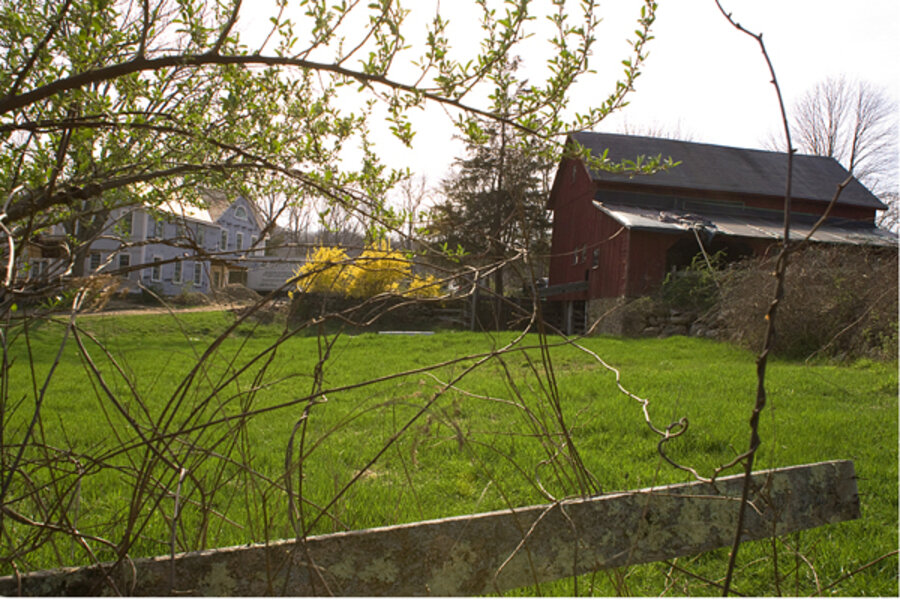How to determine if wind power is for you
Loading...
The sun is finally shining here in East Haddam, Conn., and the weather even feels springlike, for a change. Our carpenters are nailing up the last few cedar boards of siding and the sheet-rockers started yesterday.
Yes, as long as I don’t look at our almost empty bank account, everything appears to be coming up roses as it were, here at Sheep Dog Hollow, our green renovation adventure.
And so, as I mentioned in my most recent post, I’m beginning to look to the future.
To bring new readers up to date: Because we put in a geothermal heating system, we decided to wait for a year or two before deciding on an electrical alternative to our fossil fuel-burning utility. In a year we should know how much electricity our home will use (to say nothing of hoping that we’ve at least started to replenish that bank account by then...)
We’ve looked into solar, and with all of the tax credits, rebates, and loan programs available here in Connecticut, it looks like it will be more than affordable.
But I’m also fascinated by wind, although experts say that here in New England, if you want to put in wind power you must prepare yourself to do battle – and be a bit of a self-starter.
The first thing you have to do is determine whether your property is big enough (you need an acre or more) and whether it gets the wind blowing the necessary 10 to 12 miles an hour wind overhead.
You have about a 50-50 chance of that, according to The American Wind Energy Association, which says, “half the land mass in the United States has sufficient wind to make a small turbine viable. It's crucial, however, that the wind on your property is sustained for long periods at a time.”
That means you need to be in Wind Zone 2 at a bare minimum, but are more likely to have the knot-power you need in Wind Zone 3 or higher. Click here to check the wind zones in your region at the Wind Energy Resource Atlas of the United States.
In the Northeast, we have potential for wind power, according to the Wind Atlas:
"Areas of class 3 or higher wind energy potential occur throughout much of the Northeast region. The primary areas of good wind energy resource are the Atlantic coast, the Great Lakes, and exposed hilltops, ridge crests, and mountain summits from Pennsylvania to Maine. Areas of highest wind energy potential (class 5 and 6) are the outer coastal areas such as Cape Cod and Nantucket Island, offshore areas of Lake Ontario and Lake Erie, and the higher mountain summits of the Appalachians. Winter is the season of maximum wind power throughout the Northeast region. During this season, all except the most sheltered areas have class 3 or better wind resource, and exposed coastal areas and mountain summits can expect class 6 or 7 wind resource. In summer, the season of minimum wind power, class 3 wind resource can be found only on the outer coastal areas and highest mountain summits."
If it appears your property has the potential for wind power, and you’re serious about going ahead, the next thing you have to do is to gird yourself for battle. That’s because, according to Larry Liesner, who is the owner of WireWiz and has worked with marine wind power for decades, it can be tough to get zoning permission to put up a tower high enough to make a wind turbine viable on land.
The main reason: It’s got to be high, about 30 feet above the tree line.
“It’s an uphill battle to get the permit. You have to really do your homework and be prepared with [responses to questions about] noise levels and answers for people who worry [the towers] are bird killers,” says Mr. Liesner, who also represents Ampair, an English company that has made micro-wind generators since 1973.
Yup, it’s takes a lot more leg work than simply putting solar panels up on your roof. But wind advocates such as Liesner say it’s worth the extra effort: “It is much more difficult to do than solar, but the energy harvest and the cost benefits from wind are so much greater – there’s no comparison.”
Liesner contends that you need to spend twice as much money on solar to harvest the same amount of energy from comparable investment in wind, that is depending, of course, that you have the required 10 to 12 knots of wind gusting overhead.
Let's say that your property is perfectly suited as far as wind and acreage go, and you’ve convinced your planning commission or zoning board to allow you to put up, say, a 100-foot tower.
That’s just for starters. The next thing you have to do is beg, borrow, or buy an anemometer to measure the wind on your property.
Yup, unless you’re in a very high wind zone, the experts recommend that you measure the air speed where you want to put your wind turbine for at least six months to a year to get a good sense of how the wind varies during different times of the year.
Next: Where to find an anemometer, how much they cost, and whether wind power is really worth the work.
---
Alexandra Marks blogs twice a week about her green and budget-friendly restoration of a 1902 farmhouse in Connecticut. Click here to find all her blog posts and articles.





